How to Become an Expert on Different Types of Sushi
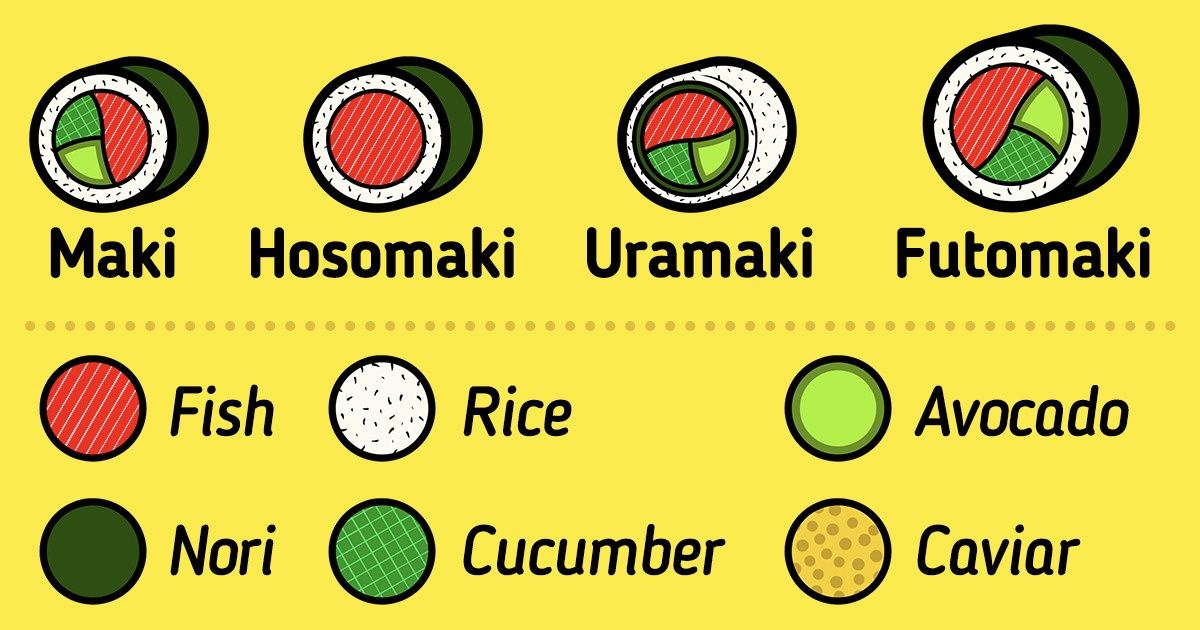
It’s not for nothing that Japanese cuisine has so many fans around the world — it is healthy, low in calories, and rich in nutrients and vitamins. And sushi is the first food that comes to mind when we think about Japanese cuisine.
In order to make you feel confident in a Japanese cuisine restaurant, 5-Minute Crafts has prepared an article that will tell you, in detail, about the delicacies of the Land of the Rising Sun.
What is sushi?
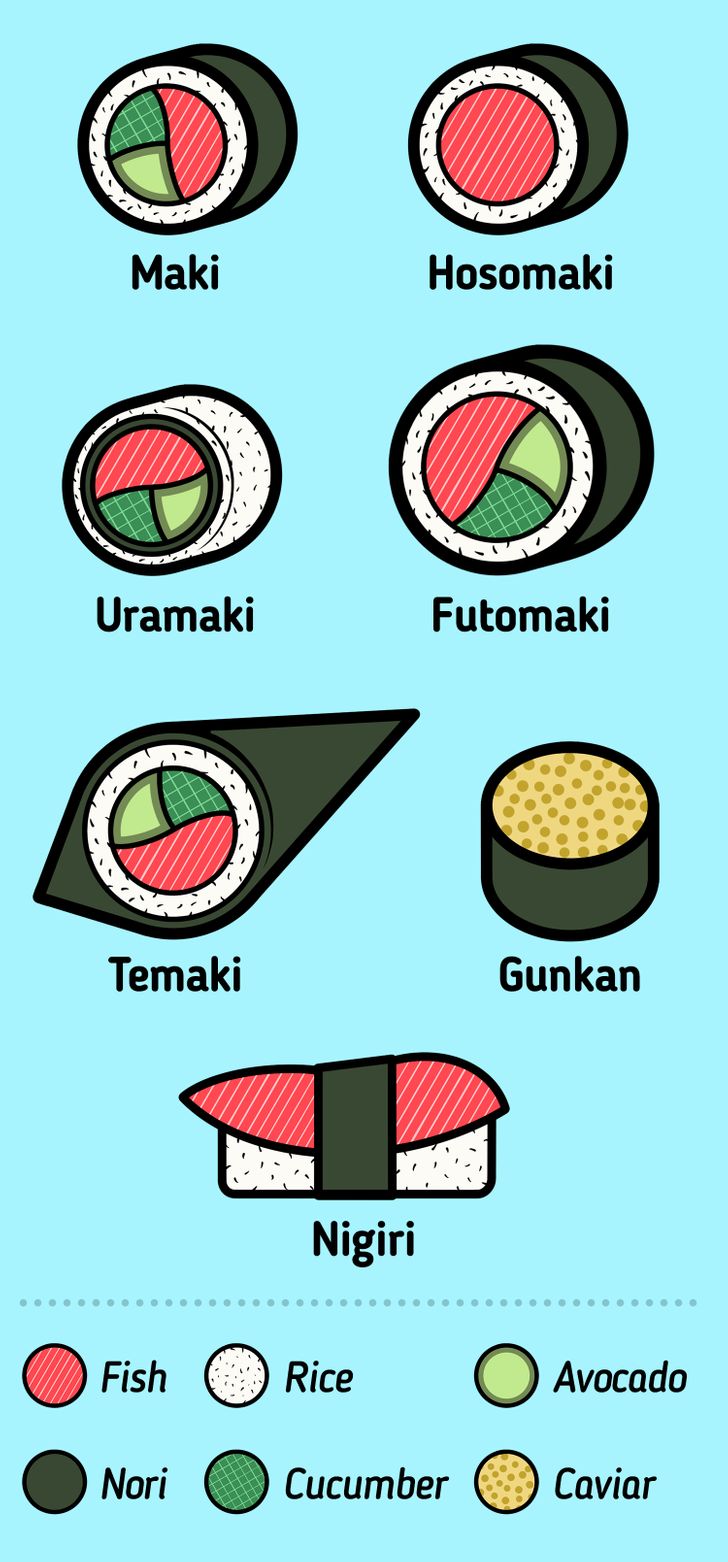
Sushi is a traditional Japanese dish made with rice prepared with vinegar, a small amount of sugar, and salt, seafood, raw or cooked fish, and vegetables. Its look and taste can vary but one of the key elements is that is present in all types of sushi is sushi rice also known as shari.
Sometimes sushi can be mistaken for sashimi, a dish that consists of thinly sliced raw fish, due to similar-sounding names. Unlike sushi, sashimi doesn’t have stuffing. When we order sushi, it normally goes together with soy sauce, pickled ginger, or wasabi (Japanese horseradish). Wasabi provides the necessary spiciness, soy sauce provides a salty taste, while pickled ginger helps get rid of the taste of the previous dish and acts as a palate cleanser for a new one.
Nigiri, gunkan-maki, and temarizushi
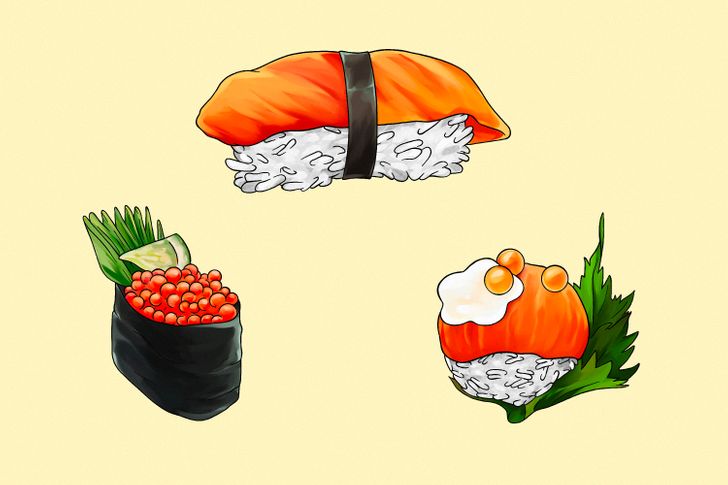
- Nigiri or Nigirizushi looks like an oval of rice topped with fish. Sometimes they are tied together with a thin strip of nori seaweed.
- Gunkan-maki is a special type of nigiri. Something like a cup is formed from nori, the seaweed is wrapped around rice so that there is some free space left on top. This space is filled with stuffing, most often caviar.
- Temarizushi is a ball of fish and rice that is shaped with the help of plastic wrap.
Makizushi, futomaki, hosomaki, uramaki, temaki
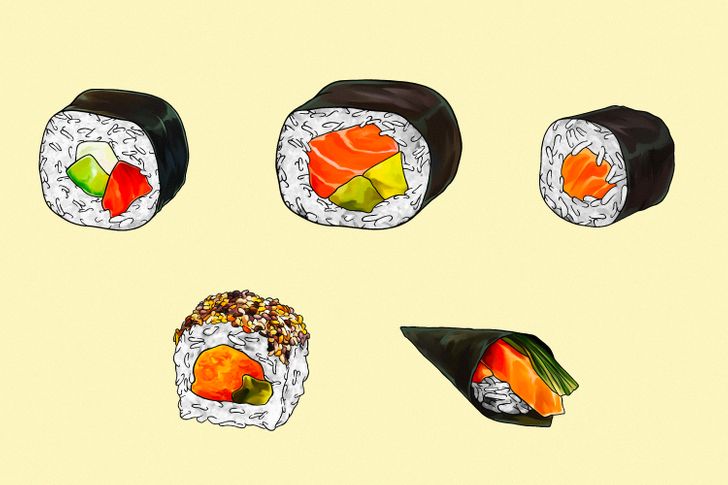
- Makizushi is a cylindrical piece of rice with stuffing formed with the help of a bamboo mat and wrapped in nori. Thin omelet or soy paper is sometimes used instead of seaweed.
- Futomaki is big sushi, that is 2 or 2.5 inches in diameter. They can be vegetarian-friendly or with seafood. They can contain 2 or 3 types of stuffing like cucumber, tuna, or pickled radish.
- Hosomaki is normally smaller sushi (about 1 inch in diameter). They contain only one type of filling — normally, it’s tuna, cucumber, or squid with shiso (Japanese herbs).
- Uramaki is an Americanized type of sushi. This roll looks as if it is inside out — the nori is hidden inside, the rice is outside. It can be cooked with any ingredients like tuna, crab meat, avocado, cheese, and cucumber.
- Temaki has an unusual conical shape that is about 4 inches long. This rolled stuffed nori is eaten with the hands because chopsticks won’t allow you to hold the roll properly. By the way, in order to not spoil the taste of temaki, they should be eaten all at once otherwise the nori will absorb moisture from the stuffing and lose its taste properties.
Oshizushi
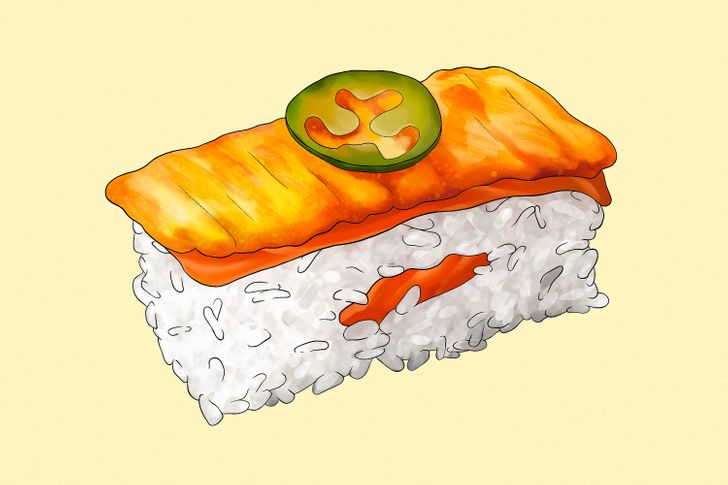
For cooking oshizushi, rice is pressed with the help of a wooden form called oshibako. Sometimes this type of sushi is called hako-sushi or box-sushi. The bottom of the form is filled with topping, then a layer of rice is placed over it and then pressed with the help of oshibako so that it doesn’t lose its square shape. Ingredients in oshizushi are either cooked or cured but raw fish is never used.
Chirashizushi
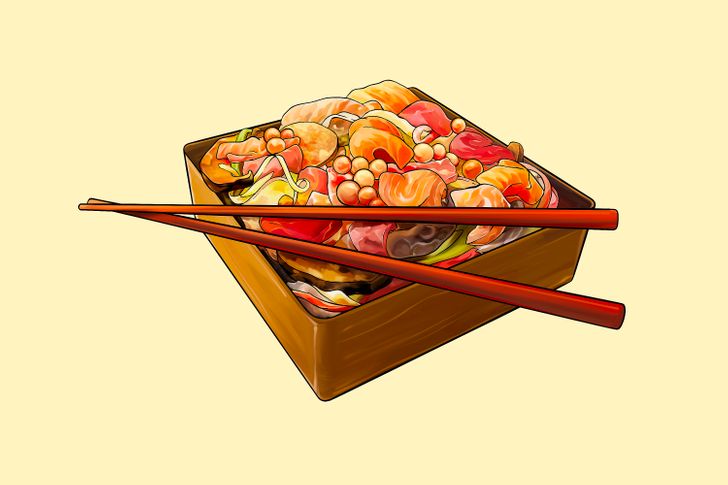
Yes, this is also sushi. Chirashizushi is sometimes called “scattered sushi.” It normally consists of rice, prawns, sea bream, octopus, shiitake mushrooms, bamboo shoots, and shredded omelet but the composition can be different too. It is eaten traditionally during the May holidays.
Western style: “Norway” roll (uramaki)
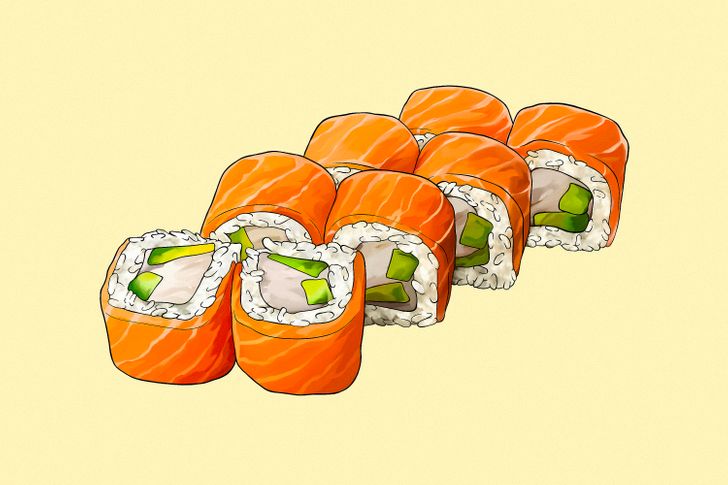
This roll is a type of uramakizushi that was invented by a Norwegian businessman in the 1980s when he offered salmon as the main ingredient. Despite the fact that salmon have always been a part of the Japanese diet, their meat was never put on sushi, as it often contained parasites and wasn’t suitable for consumption raw.
Norwegian entrepreneurs figured out how to farm pure Atlantic salmon on farms, and it became possible to produce sushi that Westerners were more used to.